Guajes, pronounced gwa-heh, are pods that grow on the Leucaena Leucocephala tree (also known as the white leadtree, jumbay, and white popinac).
They are thin, flat, and long green pods with tender edible seeds (or beans) encapsulated inside them. Staple in various cuisines, these green pods that grow on the guaje tree are known as guajes in English.
What are guajes?
The term “guaje” can be translated into various languages, and it often refers to the same or similar types of plants or pods. Gauje in Spanish, French, Portuguese, Italian, German and even Dutch is spelt like guaje in English.
Guajes can be found in both green and red varieties, with guajes verdes, also known as guaje verde, representing the green type and guajes rojos signifying the red ones. The guaje tree, or guajes tree, is where these pods thrive, offering a rich source of nutrition and a unique flavour that’s gaining recognition beyond its native regions.
(By the way, you can get guajes in a paste too, and get all the benefits, this is one of my favorites on amazon)
Guajes benefits may be few, but there are some, and they are quite impressive.
Since you are interested in “products” of trees that are surprisingly healthy, be sure to check out my article about pine pollen (don’t worry, this will open in a new tab).
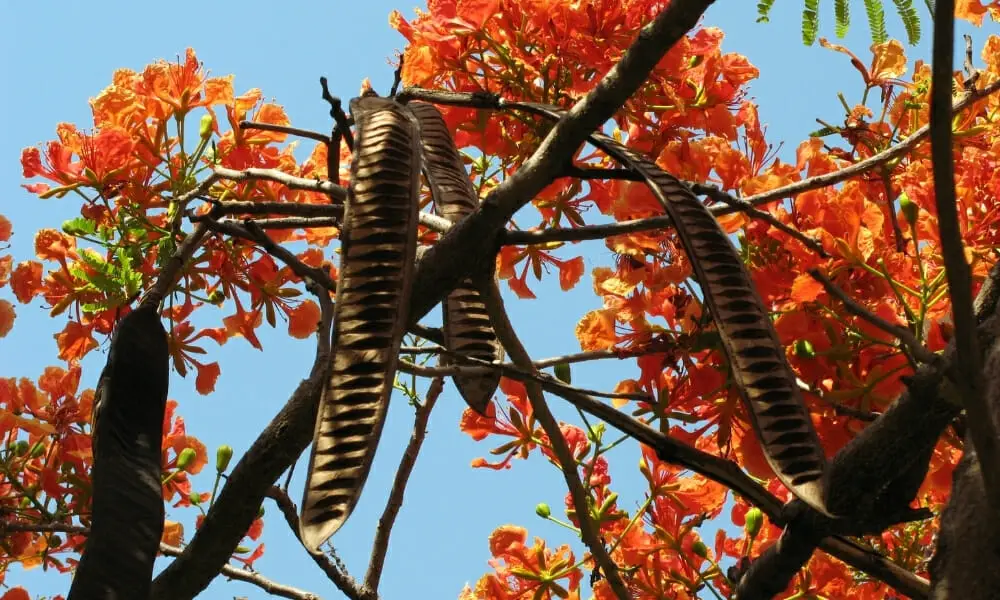
Let’s go over them and see exactly what guajes have to offer!
Check out our blog 5 Powerful Chaney Root Benefits & What It Even Is. Uncover the numerous benefits of Chaney Root, a natural wonder. Enhance your health and wellbeing with the power of Chaney Root.
Guajes Benefits
Packed With Protein
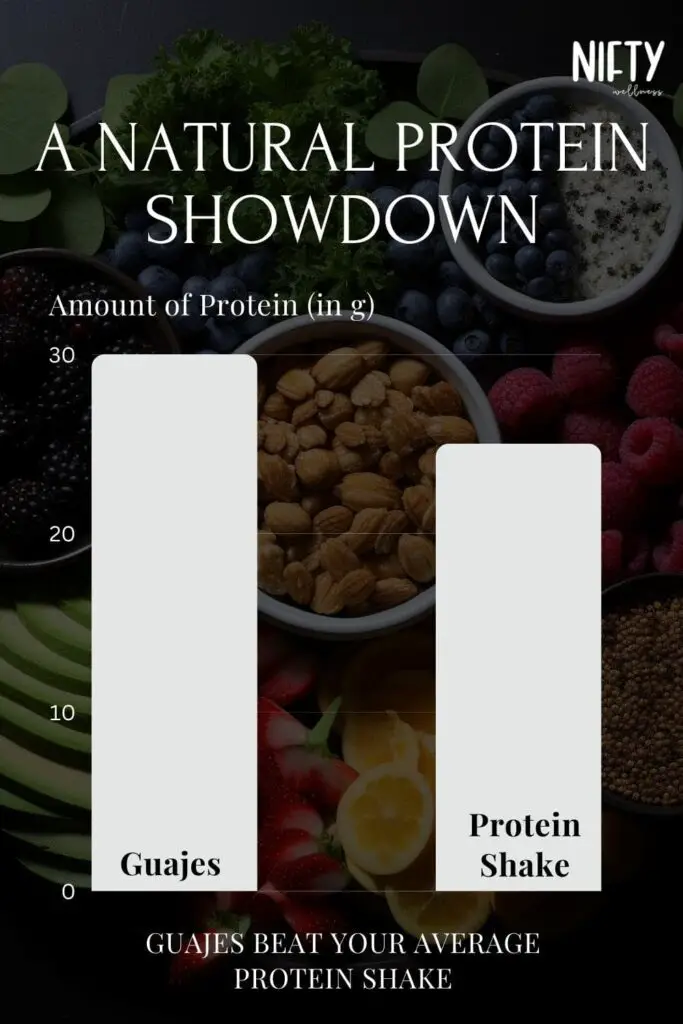
Guajes are like little green protein powerhouses! Guajes are a type of legume, and similar to many legumes, they’re very high in protein. In fact, they contain over 30% protein!
That means if you eat only 100 grams of guaje beans (not the pods), you’ll consume over 30 grams of protein! That’s more than most protein shakes, and it’s completely natural.
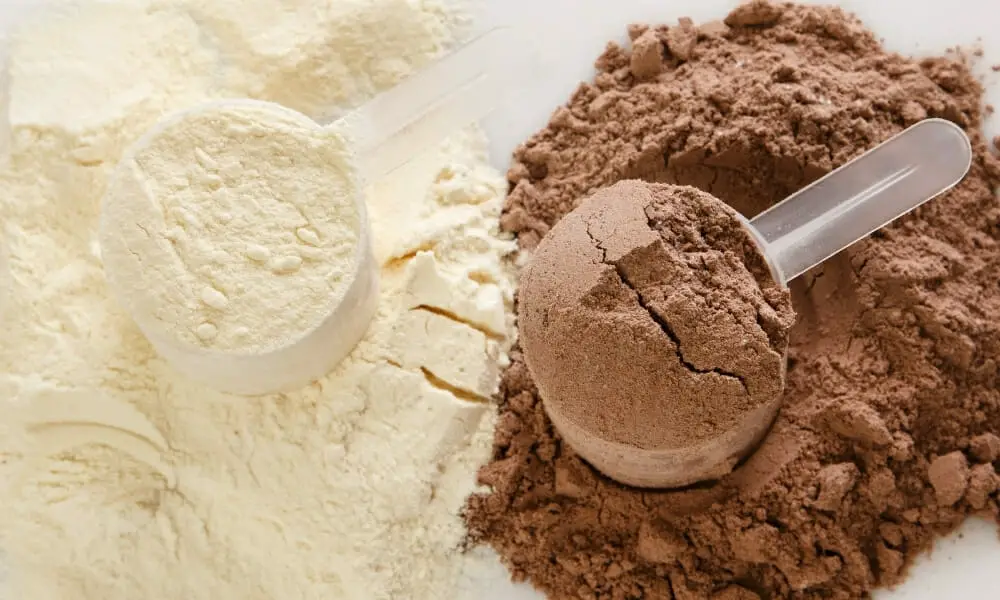
For that reason, it has long been used as food for livestock. Powerful nutrition, small package. These pods are loaded with plant-based protein, making them an excellent choice for vegetarians and vegans. Protein is essential for building and repairing tissues in our body. Guajes can be a great addition to your diet to boost your protein intake without relying on animal sources.
High In Fibre
Guajes are not just about protein; they’re also rich in fibre.
Continuing the theme of the last section, guajes are also about 10% fibre! So from just 100 grams of guajes, along with your 30 grams of protein, you’ll also be getting 10 grams of fibre.
That’s one-third of the recommended daily intake (25-30 grams) in just 100 grams of guajes!
Fiber is fantastic for your digestive system. Fiber helps normalize bowel movements, maintain bowel health, lower cholesterol levels, and control blood sugar levels.
It keeps things moving smoothly, prevents constipation, and promotes a healthy gut. Foods high in fibre help you feel full, which can be a big help if you’re trying to manage your weight. No doubt it’s an important thing, and most people lack fibre in their diet. Guajes verdes, or green guajes, are especially known for their fibre content.
More Energy
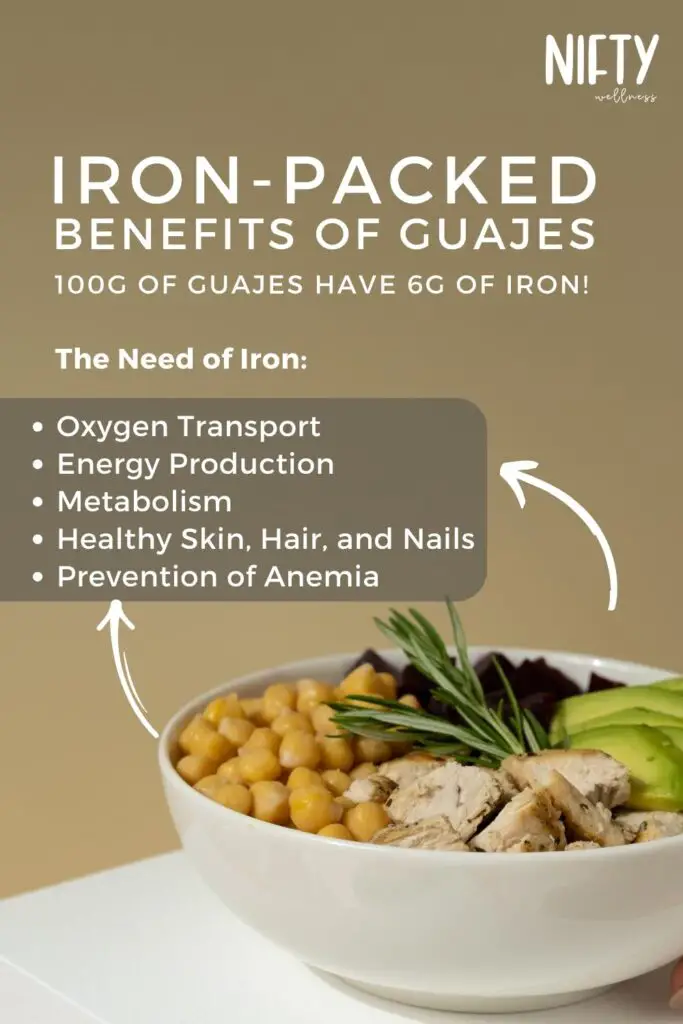
One of the major reasons people experience fatigue and lack of focus is due to an iron deficiency. Not only that, but iron will also boost the immune system and treat anemia. Need an energy boost during the day? Guajes can come to the rescue! These pods contain essential nutrients like carbohydrates that provide you with a quick and sustainable energy source. And as hinted, guajes contains iron (about 6 grams of iron per 100 grams of guajes).
When you consume guajes, you’re giving your body the fuel it needs to stay active and alert. Whether it’s a mid-afternoon slump or a pre-workout snack, guajes can help keep your energy levels up.
Prevents Disease
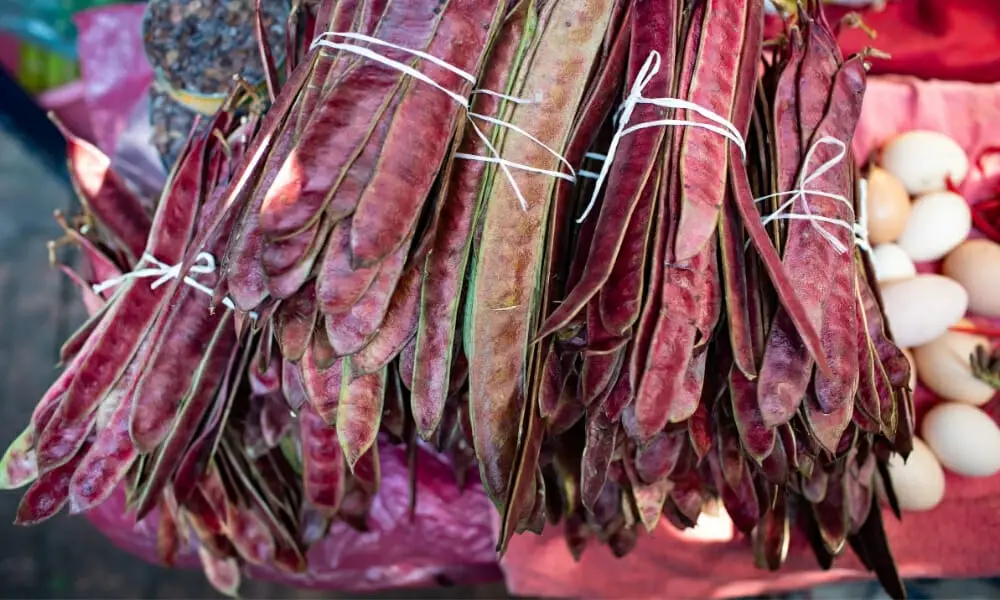

Guajes benefits go even further than basic nutritional values. It also contains flavonoids, which are natural compounds found in many fruits, vegetables, grains, and roots.
These flavonoids act in plants as antimicrobial and antioxidant agents. And in our bodies they act pretty much the same, preventing inflammations, bacteria, and most importantly, free radicals.
Free radicals are unstable atoms that were released, or “escaped”, from normal bodily processes. They roam the body freely and have been correlated with many harmful diseases, namely Alzheimer’s, dementia, asthma, diabetes, and even cancer.
As we’ve mentioned, many plants contain these elements, but studies show that guajes have an exceptionally high free radical scavenging activity. Which means they would do an even better job in eliminating these disease-causing atoms.
If you’re interested in this benefit specifically, red guajes have an even better antioxidant activity.
Read our blog Beet Flow, What Is It & 5 Other Solutions For Sluggish Bile Flow. Elevate your well-being and embrace a healthier you today.
Fights Inflammations
Guajes rojos, or red guajes, have anti-inflammatory properties that can benefit your health. Inflammation is linked to various chronic diseases, so anything that helps reduce it is a win. Guajes contain antioxidants and bioactive compounds that may help lower inflammation levels in your body. The flavonoids, as mentioned in the previous section, also act as anti-inflammatory agents. They do so partly by fighting off free radicals that often cause random inflammations. And partly by directly influencing inflammation. Adding them to your diet could be a tasty way to combat inflammation naturally.
That anti-inflammatory action means guajes can treat, as well as prevent, arthritis, lupus, heart disease, diabetes, depression, cancer, and much more.
Stronger Bones
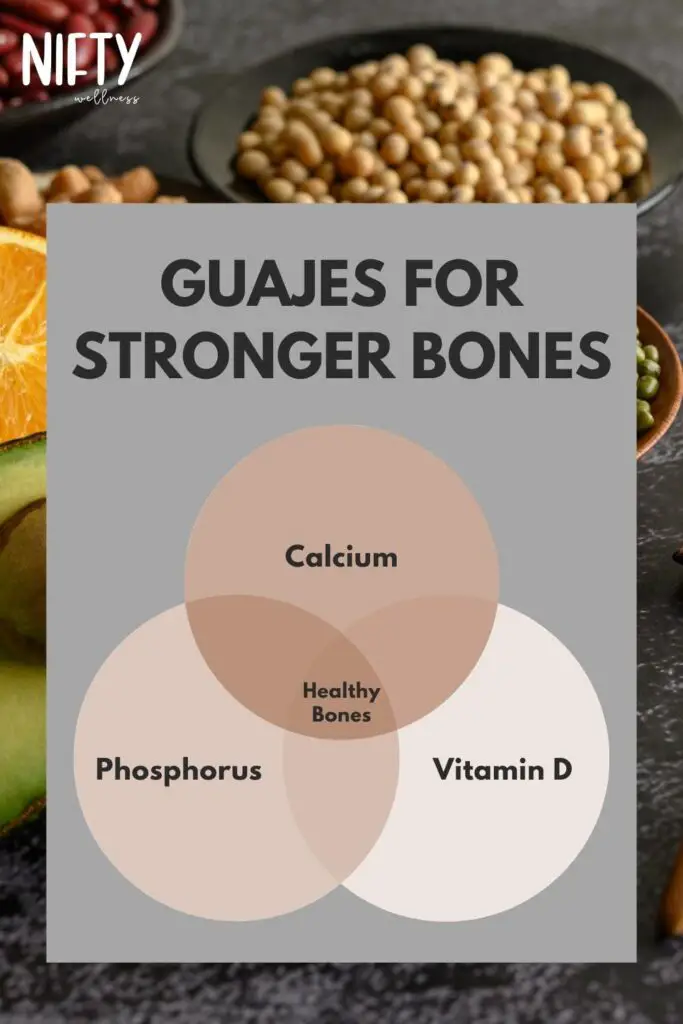
Guajes benefits the building, healing, and strengthening of bones because of two minerals it contains, calcium and phosphorus. Guaje verde, or green guaje, is a good source of calcium and phosphorus. These minerals play a vital role in maintaining strong and healthy bones.
Calcium is needed by your body to make healthy bones, and for the proper function of muscles, nerves, and cells.
And phosphorus works with calcium and vitamin D to keep your bones healthy and strong.
Calcium, in particular, is essential for bone density and preventing conditions like osteoporosis. Incorporating guaje verde into your meals gives your bones the support they need to stay sturdy and resilient. Your future self will thank you for it!
Guajes Nutrition Facts
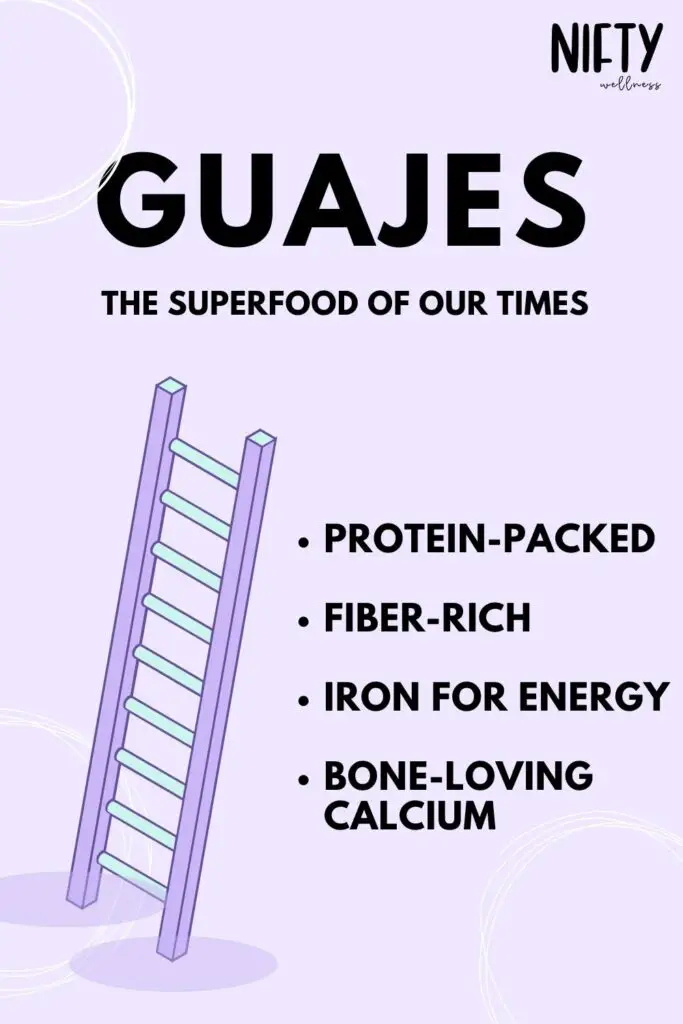
As you’ve seen throughout this article, guajes has many powerful traits; here they are in a list:
- 30% Protein
- 10% Fiber
- Flavonoids
- Iron
- Calcium
- Phosphorus
- Potassium
- Magnesium
- Antioxidants
- Anti-inflammatory
- Antimicrobial
Conclusion
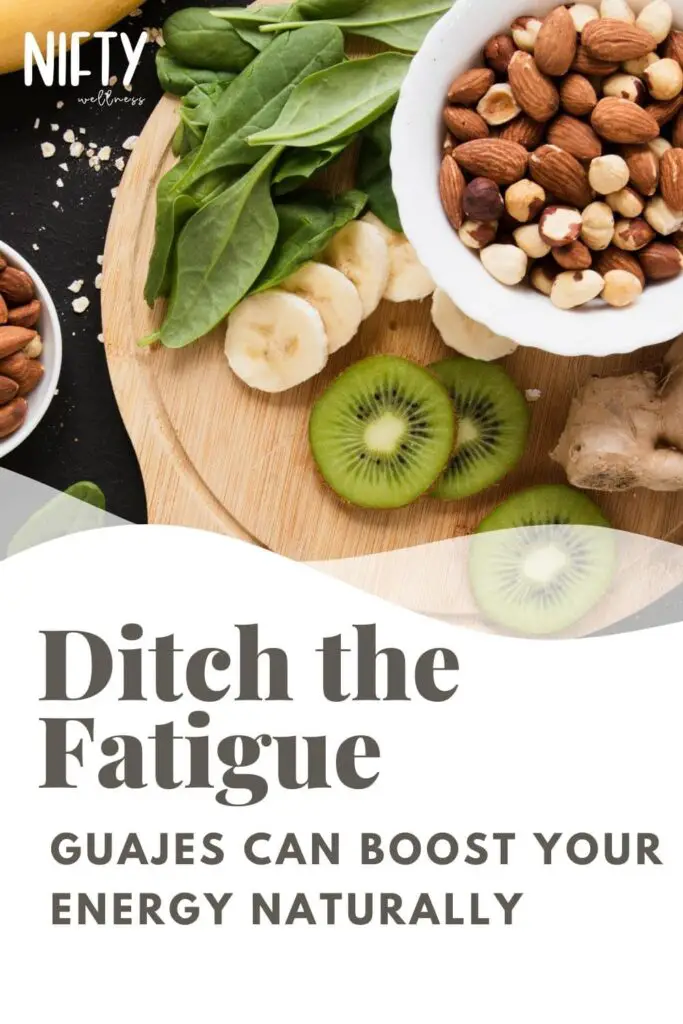
Guajes offer a rich nutrient profile that includes essential minerals like potassium and magnesium, making them a versatile and delicious choice for your meals. So we think guajes health benefits are clear and its proven to healthy as it is tasty.
If you’re looking to enhance your diet with something both delightful and nutritious, guajes could be the perfect solution. Eat it raw, boil it, roast it, use it in soups, salads, casseroles, and more.
It’s super versatile and tastes something like avocado, pepper, garlic, and pumpkin seed mixed together. It’s lovely. Don’t hesitate to try them and savour their exceptional flavours and health benefits.
If you’re looking for another unique and healthy food, check out my article about chesa fruits.
Frequently Asked Questions (FAQs)
Can individuals with dietary restrictions consume guajes?
Yes, individuals with dietary restrictions can often enjoy guajes as they are a natural food source. However, it’s essential to consider individual dietary needs and consult a healthcare provider or nutritionist if you have specific concerns or allergies. Guajes can be valuable to various diets, but ensuring they align with your dietary requirements is always wise.
Are there any side effects of consuming guajes?
While guajes are generally considered safe and nutritious, some individuals may experience side effects such as mild digestive discomfort, including gas or bloating, particularly when consumed excessively. As with any food, moderation is key. It’s advisable to introduce guajes gradually into your diet and monitor your body’s response. If you have specific concerns or allergies, consult a healthcare provider or nutritionist before adding guajes to your meals.
Can guajes help in managing diabetes?
Guajes may aid in managing diabetes due to their high fibre content, which can regulate blood sugar levels. Having said that, it is important to remember that individuals with diabetes must consult healthcare professionals or dietitians before dietary changes. Guajes should be part of a balanced diet and a diabetes management plan, with regular blood sugar monitoring and personalized guidance.
How do guajes contribute to sustainability?
Guajes support sustainability by thriving in arid regions without heavy water needs. They also prevent soil erosion and enhance soil fertility. Their nitrogen-fixing abilities improve soil quality, reducing the reliance on synthetic fertilizers. Guajes provide nutritious food, enhancing food security in their growth areas. Overall, they contribute to sustainable agriculture and environmental conservation.
Are there any traditional dishes using guajes?
Certainly! Guajes are a versatile ingredient in traditional cuisines. In Mexico, they star in dishes like “mole de guajes,” a savoury stew bursting with flavours. Meanwhile, Filipino cuisine celebrates guajes in “ginataang guaje,” a creamy and delightful coconut milk-based dish. These recipes showcase the culinary diversity and versatility of guajes in various cultural traditions, making them a unique and delicious addition to the world of cooking.

